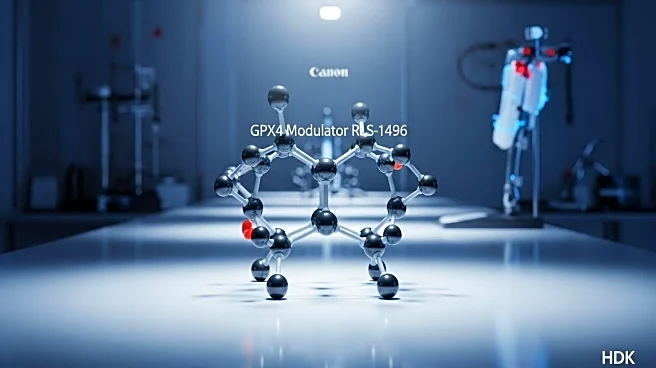What's Happening?
Regeneron has announced positive results from a phase 3 trial of its drug candidate garetosmab, aimed at treating fibrodysplasia ossificans progressiva (FOP), a rare and debilitating disease. Garetosmab, an anti-activin A antibody, demonstrated significant efficacy in reducing new bone lesions compared to placebo, achieving reductions of 94% and 90% at doses of 3 mg/kg and 10 mg/kg, respectively. The company plans to file for FDA approval by the end of the year. If approved, garetosmab will join Ipsen's Sohonos as the second FDA-approved treatment for FOP, which affects approximately 400 people in the U.S. and 900 worldwide.
Why It's Important?
The development of garetosmab is significant as it offers hope for patients suffering from FOP, a condition that progressively replaces muscles, tendons, and ligaments with bone, leading to severe disability. The potential approval of garetosmab could provide a more effective treatment option, addressing the limitations of existing therapies like Sohonos, which has faced challenges due to side effects. This advancement underscores the importance of continued research and innovation in rare disease treatment, potentially improving quality of life for affected individuals and expanding therapeutic options in the medical field.
What's Next?
Regeneron is expected to submit a marketing application to the FDA for garetosmab before the end of the year. The independent data monitoring committee has recommended transitioning all patients in the OPTIMA trial to garetosmab, highlighting its efficacy. As the FDA review process unfolds, stakeholders including healthcare providers, patients, and advocacy groups will be closely monitoring developments. Ipsen, the maker of Sohonos, is also advancing its own FOP treatment, fidrisertib, currently in phase 2 trials, indicating ongoing competition and innovation in this therapeutic area.
Beyond the Headlines
The success of garetosmab in clinical trials may influence future research directions in the treatment of FOP and similar conditions. The focus on activin A as a therapeutic target could lead to new insights into the molecular mechanisms underlying heterotopic ossification, potentially opening avenues for novel treatments. Additionally, the high cost of FOP treatments raises ethical and economic considerations regarding accessibility and healthcare equity, prompting discussions on pricing strategies and insurance coverage.










